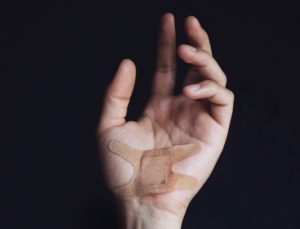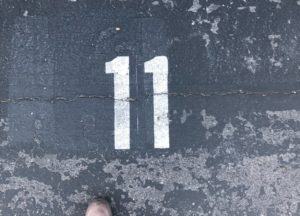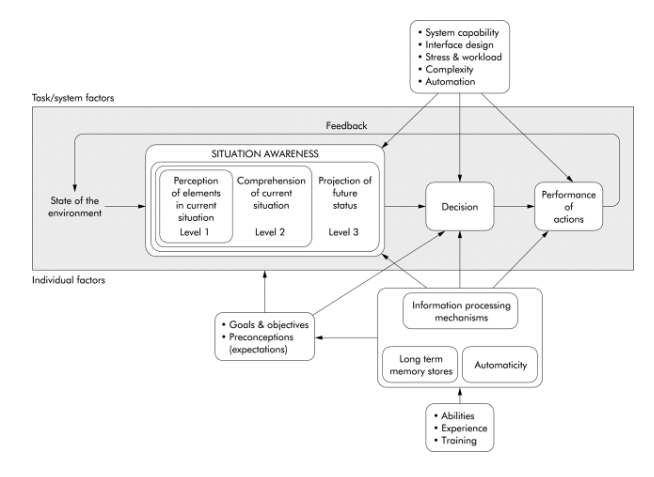Situational Awareness
Medical Simulation provides opportunities for learners to identify, practice and evaluate situational awareness (SA) during various clinical events. Healthcare Simulation is particularly useful when those events are rarely encountered during training or routine clinical practice. Medical errors associated with lack of attention, inappropriate interpretation of data and lack of follow up to surrounding activities and equipment are not uncommon. While time-to-task, error identification and other methods have been used to measure clinical performance, many of these methods are costly, depending on the experience of the raters and do not directly consider SA.
Situation awareness can be thought of as an internal mental model of the current state of an individual’s environment. In “Objective measures of situation awareness in a simulated medical environment” by Wright, Taekman, & Endsley”, Endsley defines SA as ‘‘the perception of the elements in the environment within a volume of time and space, the comprehension of their meaning and the projection of their status in the near future’’. Situational awareness has three distinct levels:
- Perception of the environment
- Comprehension of the meaning of this information
- Projection of events or actions in the future based on this perception and comprehension.
Endsley believes that SA is a separate construct from decision making and actions. Situational awareness is however, the first step in decision making. In addition, two persons may have the same SA but may proceed differently based on prior experience or the possession of different personality characteristics.
Sponsored Content:
Assess Your Situational Awareness
Before reading further, please take a look at the following video and calculate your score:
Sponsored Content:
Klein suggests that SA is important in the study of human work for four reasons:
- SA is linked to performance.
- Limitations in SA may result in errors.
- SA may be related to expertise so that previous experience affects actions.
- SA is the basis for decision making in most cases.
Measurement of Situational Awareness
Although Situational Awareness was initially used in aviation, an adaptation of the Situation Awareness Global Assessment Technique (SAGAT) is available for use in the healthcare setting. SAGAT uses the query technique, where individuals participate in a simulated event, and a facilitator randomly ‘freezes’ the simulation to query participants regarding their perception, comprehension, and projection of the situation (for greater detail see reference).
Relevance of Situational Awareness to Clinical Practice.
- SA includes careful perception, understanding, and prediction of events in a specific environment.
- Cultures that focus on efficiency and removal of staff from the bedside contribute to “inattentional blindness” to potential hazards currently existing in a given environment.
- Potential hazards to patient safety such as medication errors or catheter infections make ideal simulation scenarios to improve situational awareness.
- Experiential and other learner centered activities focused on situational awareness have been shown to increase recognition and reporting of errors.
Suggestions for SA scenarios:
Learners should assess the entire room. Questions for learners to consider?
- Gathering Information.
- What do I see/hear?
- Am I aware of all possible cues coming from this environment?
- Have I scanned the entire room and identified all pieces of equipment?
- Is the equipment on, what is its role?
- Who is in the room, what is their role and what are they doing?
- What patient data is available?
- Vital signs/O2 saturation?
- Known medications?
- Patient assessment?
- Test results?
- Are there monitors or other pieces of equipment out of my line of vision?
- Comprehension of the current status:
- Overall, what do I understand about the patient’s condition from my observations?
- Do I see anything that represents a potential patient hazard or be a cause for concern?
- Are all tubes/IV fluids/medications as expected, connected appropriately, and have dressings/ tubes that are not expired?
- Is there anything I can seen that is not following institutional standards/protocols?
- Are there trip hazards?
- Are common patient items and call light within reach?
- Is there an identified team leader ( if appropriate).
- Do I need any other information to make a decision
- What does the monitor data tell me about the patient’s condition and likely progress?
- Do I have enough information to accurately reflect the situation?
- What is the patient telling me?
- Is there anything I do not understand?
- What is the likely cause of potential problems?
- Overall, what do I understand about the patient’s condition from my observations?
- Projection of future status
- What is the most likely actions (effects) of all elements in the environment? Based on:
- The current status and possible future changes of all the elements in the environment
- Comprehension of the situation.
- What actions do I need to take based on my analysis of the situation?
- What will the most likely outcomes of these decisions?
- What other outcomes could there be?
- What are the risks/benefits of my chosen course of action?
- What is the most likely actions (effects) of all elements in the environment? Based on:
- Freezing scenarios
- Freeze scenarios at certain points allows learners to review the situation, state their existing planned interventions and make changes to their plans in the light of a revised situational assessment.
Clinical Simulation practice to improve situational awareness will increase a learners ability to assess the current environment, understand the significance of the environment and predict future events. This heightened awareness will in turn will lead to safer patient care.
Subscribe for More Great Simulation in Healthcare Resources!
Situation Awareness Latest Updates

How to Use Low-Budget Props, Moulage to Set Healthcare Simulation Scenes

11 More Key Terms to Help Your Healthcare Simulation Program Develop Faster

Tacit Knowledge (From Simulation) Adds to Situational Awareness
Sponsored Content:

















